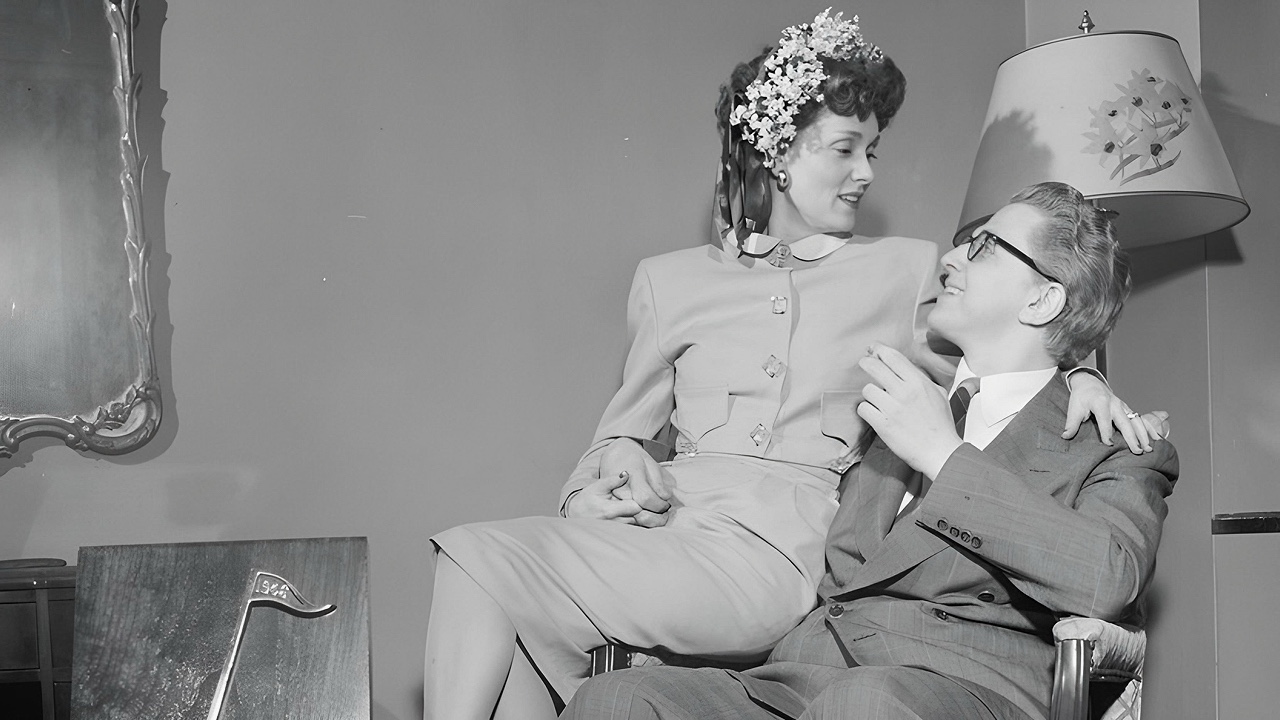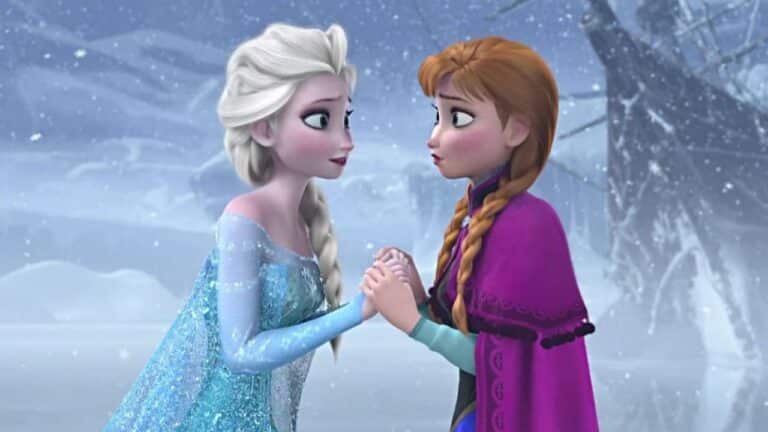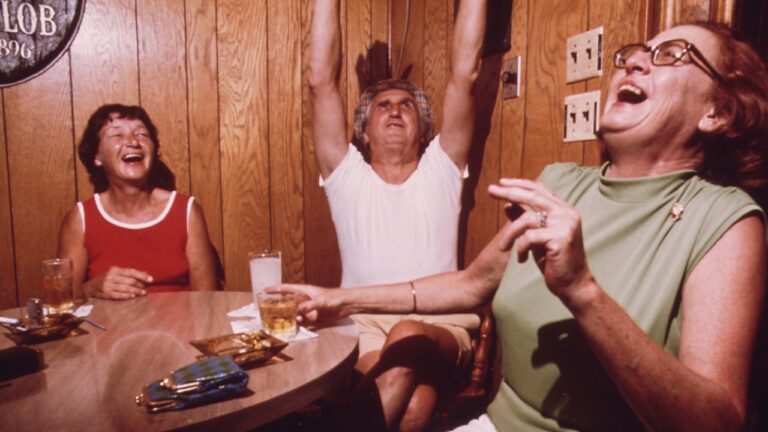24 ’50s Trends That Would Be Publicly Shamed Today

People often look back at the post-World War Two period with rose-tinted glasses. It was a time of great American confidence and pride — though not for everyone. While the middle classes and above thrived off a bustling economy, life wasn’t perfect for all — those in the Jim Crow South, for example.
Human history’s timeline will invariably include the post-war baby boom as an iconic era for America. Nonetheless, certain cultural norms of the time wouldn’t work in modern times. We have researched parts of the good old times that would be canceled in a 2024 heartbeat.
1. Conformity

How many photos of people do we see during this period where anybody stands out? Unlike today’s youth-driven fashion and culture, the ‘50s was a time of conservative clothing — and ideals. It wasn’t until the end of the decade that the Civil Rights Movement started growing shoots.
It wasn’t common to make a stand against tyranny or the ‘gubment because America was fresh from defeating national socialism in Europe. The thought of U.S. leaders turning on their own people was unthinkable to most. How times are changing.
2. No Seatbelts

Former Secretary of Defense Robert MacNamara, who served under President J.F.K. and Lyndon Johnson, had an ironic life. While partly responsible for thousands of lost American lives in the Vietnam War, he saved many before that.
A former statistician and Harvard Business School assistant professor, he later joined Ford. At the time, America’s road death rate was shocking due to there being no seatbelts in commercial vehicles. It all changed when he introduced seat belts to the Ford range. The move was mocked by Chrysler at the time, according to Harvard Business Review.
3. Tobacco Advertising

While we still see big tobacco adverts in Asia and beyond, the influence of these companies is waning in the West. In the past, however, they were allowed to promote their product to minors, and doctors even recommended them.
A Stanford University research post shows dozens of such ads from the ‘50s. One ad in particular conflates serving in the military with the brand Camel.
4. Health and Safety

The idea of there being an Occupational Safety and Health Administration (OSHA) in the ‘50s was laughable to most people. OSHA came in 1971, leaving behind decades of unsafe construction sites and workplace fatalities.
One example of why this was important comes in the statistics. “The number of occupational deaths ranged from 16,000 in 1951 to 13,300 in 1958 (compared to 5,488 in 2007),” writes Gregg LaBar in EHS Today. “Almost all were attributed to traumatic injuries from falls, electrocution and machine hazards.” As much as we love those old skyscraper construction worker photos, such poor safety measures would lead to a lawsuit today.
5. Mental Asylums

Before “deinstitutionalization” happened, the United States had a place for anyone suffering from mental disorders — it wasn’t in counseling. People with physical or cognitive challenges found themselves put into mental institutions alongside other poor souls suffering even more severe issues.
Thankfully, the Disability Rights Movement paved the way for the end. Then, in 1963, J.F.K. signed the Community Mental Health Centers Act. This bill gave more federal funding for local mental health community centers across the country.
6. Environmental Ignorance

While not caring for the environment wasn’t a trend per se, excessive consumerism began in the ‘50s. The population was growing at a rate never seen before, and American families’ wealth doubled during the decade.
Consequently, packaging, freight, and manufacturing all played a part in damaging much of America’s waterways and urban air quality. One example of how this evolved was in the Clean Water Act of 1972, making the protection of water quality federal law.
7. Male Co-Signers for Credit

In the ‘50s, women didn’t have such freedoms as they enjoy today, though few people know how far their rights were prohibited. Ladies couldn’t buy anything on credit without a male guarantor — a husband or dad.
Anybody wondering how soon this would change might be surprised at how late it did. In 1988, the U.S. Senate passed the Women’s Business Ownership Act.
8. Poor Child Safety in Toy Manufacturing

In Tim Allen’s comedy, The Santa Clause (1994), his toy executive speaks out against the company’s Santa in a Tank product. While we might laugh today at such an innocent time, the ‘50s was in its own league.
Antique Trader lists the all-time worst toy ever put on the market — The Atomic Energy Lab, containing radioactive materials. “Users should not take ore samples out of their jars, for they tend to flake and crumble,” explains the post, quoting the instruction manual. “You would run the risk of having radioactive ore spread out in your laboratory.”
9. TV Dinners

Smithsonian Magazine has a great feature on the rise of TV dinners in the ‘50s, which came from a Swanson salesman. Upon discovering how the company had a 260-ton frozen turkey surplus, he devised the idea for a heatable aluminum tray for serving the leftovers with other additions.
These days, we are warned about processed food, with studies correlating the amount of non-fresh food with cancer rates. Therefore, TV dinners every night would be unthinkable for anyone who values their health. They are fantastic on occasion, however.
10. Racial Segregation

Racism is — as it should be — publicly shamed today, though this wasn’t always the case in the United States. The Dixiecrat South opposed a growing black American Civil Rights Movement and fought to keep the segregated status quo. Black Americans in some Southern states were treated like second-class citizens and even persecuted as such.
While there may be some on the fringes who believe all races should be kept apart, the idea of segregation in 2024 would be as laughable as it is impossible.
11. Chauvinism or Sexism

Even the most ardent Mad Men fan will admit Don Draper and co. are relegated to the ‘50s and ‘60s for good reason. Linda Stein of Women’s ENews wrote in 2019 about how women were still seen as homemakers, not heads of the household.
We do see female executives making their way in the latter stages of the show, but they have to fight twice as hard as their whiskey-swilling, Lucky Strike-toting counterparts. Just try and hold your female office colleagues back in 2024.
12. Drinking and Driving

Though California signed its first drink-driving laws into effect in 1910, it took a few years for the rest of America to follow. Even then, it took many decades for the social stigma to embed with this dangerous habit fully.
Of course, the modern era has little time for anybody to drive while over the legal alcohol limit. A cursory Internet search of the term “drink-driving commercial” will yield hours of increasingly graphic public service announcements.
13. Mental Health Attitudes

As fond as I am of stoicism, the ‘50s was a time when there was little discussion about severe mental health disorders. Many of the psychological disorders with which we are familiar today were disregarded in the ‘50s.
The first edition of the Diagnostic and Statistical Manual of Mental Disorders was published in 1952. However, it wasn’t until the late ‘60s that the American Psychiatric Association (APA) finally recognized attention deficit/hyperactive disorder (ADHD).
14. Corporal Punishment in Schools

Even those born in the ‘80s will remember “tough love” being issued at school. Spanking one’s child was the norm in the ’50s, both at home and in the principal’s office.
Even in 1977, the Supreme Court used an Eighth Amendment clause to justify schools continuing the practice. Fast forward to 2024, and 33 states have made the action illegal, which defies belief. Still, anybody today caught beating a child in public will face a torrent of hatred, cell phones, and potential civic interaction.
15. Sexual Identity Laws

Human Rights have come a long way since the post-war decade. It wasn’t until 1961 that Illinois became the first state to homosexuality. Remarkably, this was only nine years after the APA classified being gay as a “sociopathic personality disturbance.”
In 2015, former President Barack Obama’s tenure oversaw America’s first same-sex marriage act signed into law following a 5-4 Supreme Court ruling. Couples could now marry legally in 50 states, regardless of their sexual orientation.
16. Blackface

There is a spectrum with the popularized term “cultural appropriation.” At one end would be wearing blackface and perpetuating unacceptable stereotypes. On the other end might be eating food from another country. While the latter sounds ridiculous, the former was common throughout the Anglosphere in the ‘50s.
An example of this was The Fred Waring Show (1949), a family favorite in the United States, airing on CBS. Of course, we don’t allow this anymore, though as recently as the ‘00s, renditions of blackface were still on mainstream television.
17. Whitewashing

The post-war decade spawned some of Hollywood’s most-loved Western movies, including The Gunfighter (1950), High Noon (1952), and Rio Bravo (1959). There was only one caveat: some of the movies made in the ‘50s used white actors in Native American roles.
Notwithstanding the racial signaling, the physical differences between Caucasians and Aboriginal peoples of the Western Hemisphere are stark. Gladly, this custom died a long time ago.
18. Discriminatory Hiring

The ‘50s was a time of economic boom for America, and these times demanded a ready workforce. It wasn’t a time of plenty for all, however. People born outside the United States found it harder to get work than their white hosts.
This scenario all changed in 1964. Title VII of the Civil Rights Act gave protection to employees of all races and backgrounds against discrimination in the workplace.
19. Unequal Pay

It’s fair to say ladies didn’t have a fair shake in the ‘50s on many fronts, especially employment. The Second World War gave many women a taste of life outside the home, with women proving they could do what was unthinkable before.
Those independent women who braved the male-dominated ‘50s workplace found getting paid fairly wasn’t yet signed into law. 1963 saw an end to this with the Equal Pay Act, though some might argue we have reached full parity.
20. Weird Dieting Products and Services

A little research into ‘50s-era adverts for weight-watching products will produce some eyebrow-raising results. Some range from telling readers a 24-hour diet “takes pounds off big eaters,” which makes perfect sense.
Meanwhile, others recommended men take “ironized yeast tablets” to gain weight. “Thousands of thin, tired, nervous people gain 10 to 25 lbs…” promises the ad copy.
21. The Lavender Scare

Most modern U.S. historians will discuss the McCarthyism era in the ‘50s with glee. The Congress-led communist witchhunt has generated many books, movies, and interviews over the subsequent years. Meanwhile a lesser-known “scare” was happening at the same time, which gained the moniker, “the Lavender Scare.”
Thousands of gay federal employees were pushed out or forced to resign their positions, a purge unfathomable in the present day. The National Archives presents a Senate Interim report on the matter with almost unprintable epithets in its title, dated 1950.
22. Treatment of Non-Western Cultures

Warner-Pathé.
While it may not have been an overtly racial issue, the ‘50s zeitgeist condescendingly depicted foreign cultures. Non-Westernized characters and their customs were sometimes seen as other-worldly, mysterious, or inferior.
This technique was known as the “yellow peril” stereotype, common during the Cold War era when dealing with Asian or Middle Eastern characters. One such character is Fu Manchu in The Face of Fu Manchu (1956), an evil Chinese villain, with an exaggerated ruthless streak.
23. Domestic Gender Roles

The ‘50 gave us numerous tropes to reflect on, especially the dedicated housewife version — TV Tropes agrees. Of course, there is nothing wrong with anyone wanting to be a homemaker, stay-at-home mom, or bored housewife.
Nonetheless, some modern-day “trad wives” receive negative ridicule for wanting such a lifestyle. A 2020 Guardian article shows traditional domestic roles aren’t for everyone.
24. Tobacco Use Indoors

America got rid of public tobacco consumption a long time ago, and I guess that the overwhelming majority of people wanted it. While those who partake have every right to do so, forcing it on others in tight spaces is a no-no.
Smoke does look cool in a ‘50s film-noir close-up shot but not wafting around a public restaurant, bus, or elevator. Twenty-eight states have full indoor bans on burning nicotine.





